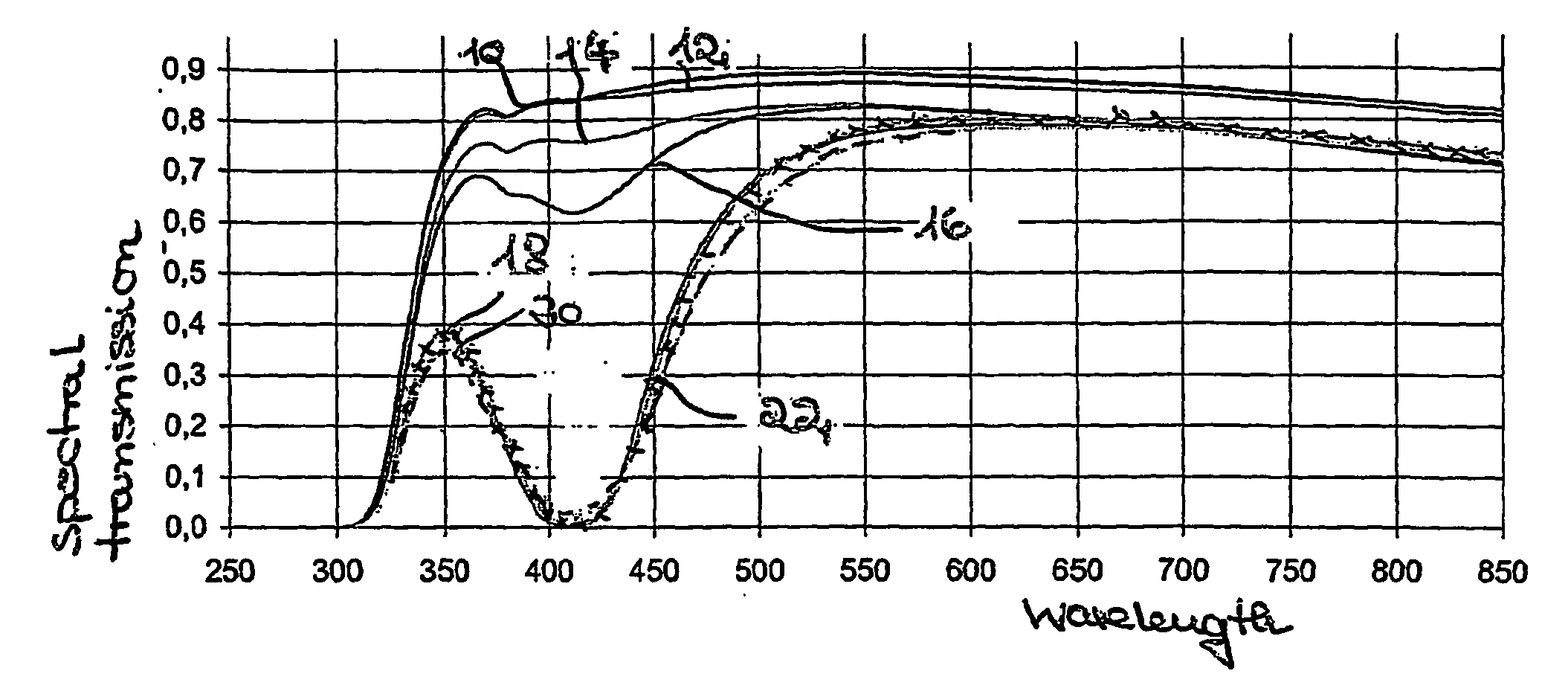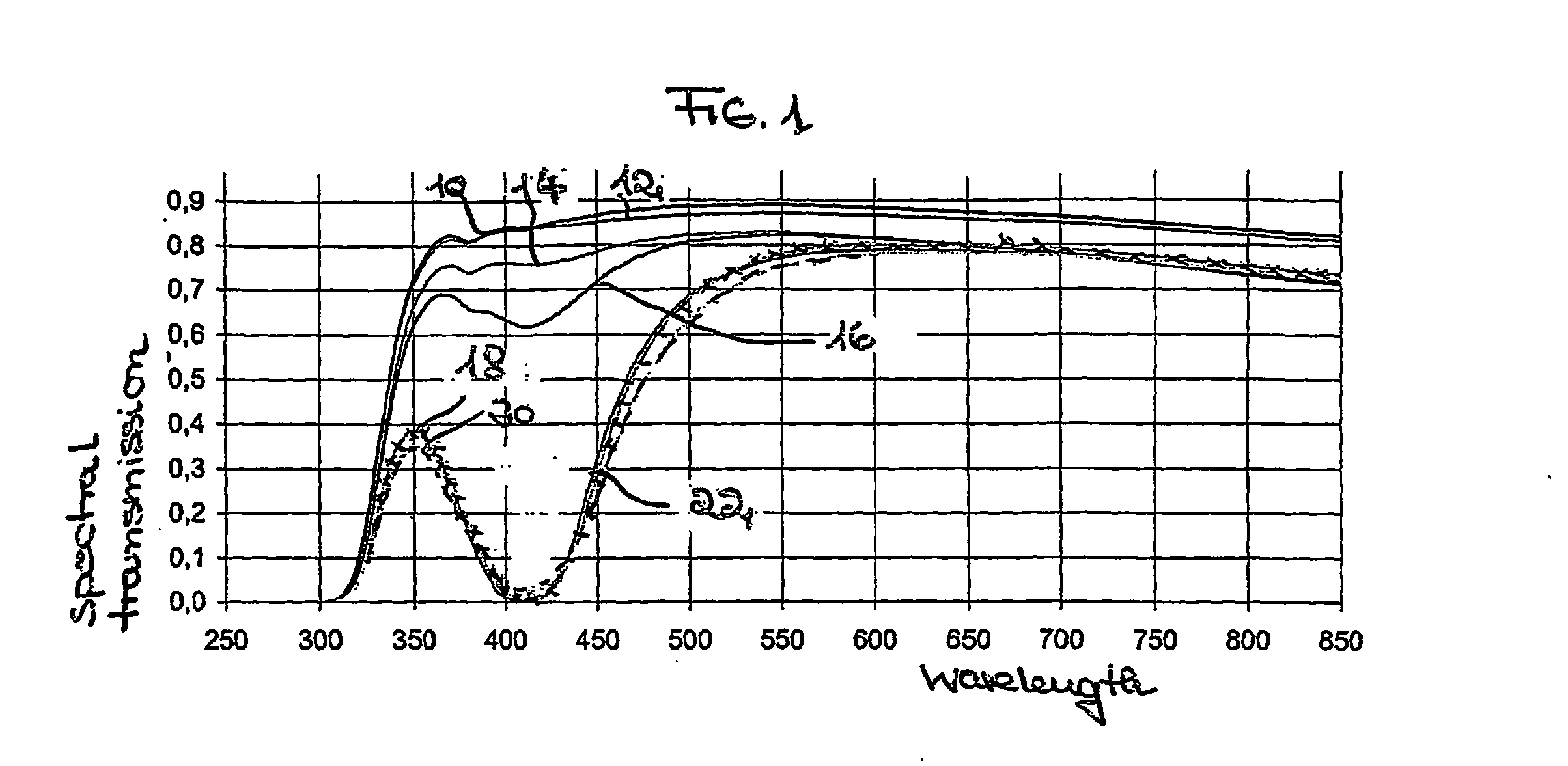Antimicrobial glass and glass ceramic surfaces and their production
a technology of glass and ceramics and antimicrobial properties, applied in the direction of special surfaces, pretreatment surfaces, botany apparatuses and processes, etc., can solve the problems of time-consuming production, uneven antimicrobial effect of the surface, and non-perfect wetting of the surfa
- Summary
- Abstract
- Description
- Claims
- Application Information
AI Technical Summary
Benefits of technology
Problems solved by technology
Method used
Image
Examples
first embodiment
[0042] In the invention a antimicrobial surface is obtained by applying in a first step a metal ion precursor material onto the surface of the substrate, especially the glass or glass-like or glass-ceramic substrate in any convenient manner, such as, for example, by dipping, spraying, screening, brushing or the like techniques.
[0043] The metal ion precursor material is a dispersion or solution or mixture of a metal ion precursor in suitable solvents, liquids or dilution substances.
[0044] The metal ion precursor can be e. g. Inorganics like Nitrates, Chlorides, Sulfates, Phosphates, Sulfides or Oxides. Also metal-organic or metallic precursor materials like nanoparticles can be used. These components can be dissolved and / or dispersed in a solution.
[0045] In a preferred embodiment totally soluable precursors are used to achieve most homogenous distribution of the antimicrobial agents on the glass surface.
[0046] The penetration depth into the glass for different precursors and precu...
embodiment 1
with a T(g) of 565° C. of table 3 are coated by screening standard technology with a metal-ion precursor having oil as a vehicle and 1 weight-% of AgNO3 as a metal ion. The film thickness was between 10-20 um.
[0159] The coated substrate was set into a furnace at first temperature of 550° C. for 10 minutes. The samples was cleaned with rinsing water for 1 minute. No significant discoloration of the glass samples was detected.
[0160] Then the ASTM 2180-01 Test and JIS Z2801 test was performed and passed.
[0161] In a further example a soda-lime float glass having the following composition in weight-% with regard to the total composition:
Si0272.00 weight-%Al2O3 0.30 weight-%Na2O14.50 weight-%MgO 2.80 weight-%CaO10.40 weight-%
with a T(g) of 565° C. according to embodiment 1 of table 3 are coated by screening standard technology with a metal-ion precursor having oil as a vehicle and 2 weight-% of AgNO3 as a metal ion. The film thickness was about 15 um.
[0162] The coated substrate was...
embodiment 7
[0206] For example from table 3 one can read, that for a glass of embodiment 7 with a solution of C38 oil containing 2 weight-% AgNo3 after a treatment for 10 minutes with a temperature of 550° C. the antimicrobial proliferation test was passed.
PUM
| Property | Measurement | Unit |
|---|---|---|
| temperature | aaaaa | aaaaa |
| temperature | aaaaa | aaaaa |
| temperature | aaaaa | aaaaa |
Abstract
Description
Claims
Application Information
 Login to View More
Login to View More - R&D
- Intellectual Property
- Life Sciences
- Materials
- Tech Scout
- Unparalleled Data Quality
- Higher Quality Content
- 60% Fewer Hallucinations
Browse by: Latest US Patents, China's latest patents, Technical Efficacy Thesaurus, Application Domain, Technology Topic, Popular Technical Reports.
© 2025 PatSnap. All rights reserved.Legal|Privacy policy|Modern Slavery Act Transparency Statement|Sitemap|About US| Contact US: help@patsnap.com



